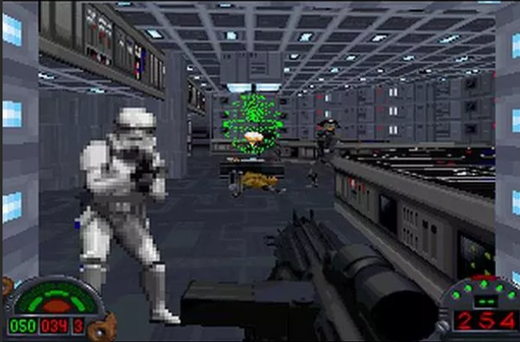
Optimizing Graphic Settings for the Best PC Gaming Experience
Share
When it comes to PC gaming, balancing stunning visuals with smooth performance is key. Finding the optimal graphic settings can make a huge difference, ensuring you get both the best possible graphics and a buttery-smooth gameplay experience. Here’s a quick guide on how to fine-tune your PC game settings.
1. Resolution: Start High, Adjust Down
Resolution dictates how sharp and detailed the game looks. Ideally, you want to play at the highest resolution your monitor and GPU can handle. Common options are 1080p (Full HD), 1440p (Quad HD), and 4K. However, pushing a high resolution can be demanding on your system. If you experience lag or a drop in frame rate, consider reducing the resolution one step (e.g., from 4K to 1440p or 1440p to 1080p) to maintain smooth performance without sacrificing too much visual quality.
2. Frame Rate (FPS): Aim for 60+ FPS
Frame rate is a major factor in gameplay smoothness. Aim for at least 60 frames per second (FPS) to keep the action fluid, especially in fast-paced games. For competitive gaming, some players prefer higher frame rates (144 FPS or 240 FPS), especially if they have a high-refresh-rate monitor (144Hz or 240Hz). However, keep in mind that higher frame rates put more stress on your system, so adjust graphics settings accordingly to maintain a stable FPS.
3. V-Sync and G-Sync/FreeSync
Vertical Sync (V-Sync) can help eliminate screen tearing, but it can also introduce input lag and lower FPS if not set up properly. If you have a compatible monitor and GPU, using G-Sync (NVIDIA) or FreeSync (AMD) can provide a smoother experience without the drawbacks of V-Sync. These technologies dynamically adjust the refresh rate of your monitor to match your GPU's frame output, resulting in smoother, tear-free gaming.
4. Anti-Aliasing: Finding a Balance
Anti-aliasing (AA) reduces jagged edges on objects, making them appear smoother. However, it can be taxing on performance. There are several types of AA (e.g., FXAA, MSAA, TAA), each with varying impacts on performance. For most players, FXAA (Fast Approximate Anti-Aliasing) offers a good balance of quality and performance without a significant hit on frame rates. If you have a powerful GPU, you can push for higher levels like 4x or 8x MSAA, but for less powerful systems, a lower setting is recommended.
5. Texture Quality: The Sweet Spot
Texture quality affects the detail of in-game surfaces (e.g., walls, terrain, characters). While higher texture settings improve visual fidelity, they can be memory-hungry. A good rule of thumb is to set textures to medium or high, depending on your GPU's VRAM (video memory). If you notice stuttering or longer load times, reducing texture resolution to a medium setting can help smooth things out.
6. Shadows and Lighting: Moderate Settings for Stability
Shadows and lighting play a huge role in creating a realistic atmosphere, but they are also resource-intensive. Settings like shadow resolution, ambient occlusion, and dynamic lighting can be dialed down to improve performance without sacrificing much visual quality. Consider lowering shadow resolution or disabling extra effects like "God Rays" or "Volumetric Lighting" for smoother gameplay.
7. Effects and Post-Processing: Customization is Key
Post-processing effects like motion blur, bloom, and depth of field add cinematic effects to games but can lower performance, especially in graphically intense titles. Many gamers prefer to disable motion blur and lower bloom intensity to keep the focus on gameplay rather than visual effects. These settings often have the least impact on the overall feel of the game but can significantly improve your frame rates.
8. Experiment and Benchmark
Every PC is different, and the "optimal" settings will vary depending on your hardware. Start with a balance of high settings and adjust downwards if necessary. Many games offer built-in benchmark tools or performance counters, allowing you to see how different settings impact your FPS. Test the game on various settings to find your ideal balance between performance and visuals.
Final Thoughts
Optimizing graphics settings for PC gaming is all about finding the right balance between stunning visuals and fluid performance. Start with higher settings, and don’t hesitate to tweak specific options like resolution, texture quality, and shadow detail to meet the capabilities of your system. A little trial and error can go a long way in delivering a top-tier gaming experience!
